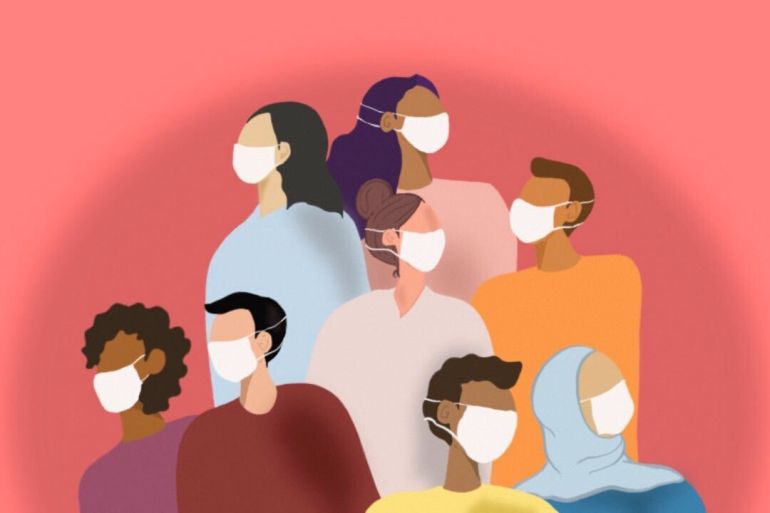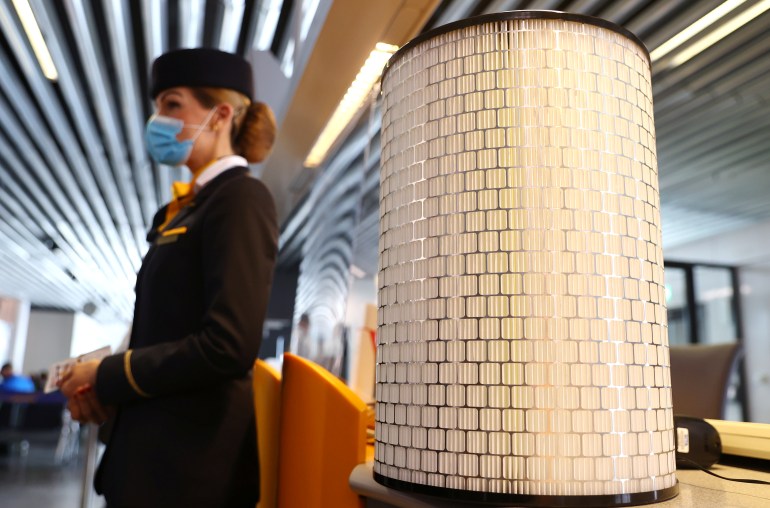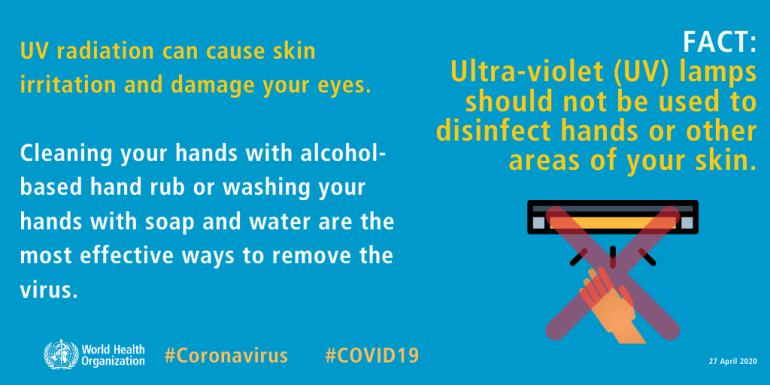COVID-19: How to make indoor spaces safer
From good ventilation to redesigning spaces, we outline ways to help reduce the risk of transmission in closed settings.

Editor’s Note: This series is produced in partnership with the World Health Organization (WHO).
With the winter season upon us in the Northern Hemisphere, cold weather conditions are forcing people to stay indoors. Coupled with children heading back to school and offices reopening, there is looming concern around a second wave of the coronavirus in Europe, North America and other parts of the world.
Keep reading
list of 4 itemsFace masks and COVID-19: All you need to know
Coronavirus: Why are more young people getting infected?
Coronavirus pandemic: How to travel safely
COVID-19 is a highly contagious respiratory disease. In closed and crowded indoor settings, there is a higher risk of it spreading compared with the outdoors, where the flow of fresh air can dilute and dissipate the virus particles.
According to the WHO, the coronavirus is primarily transmitted by droplets spread through direct or close contact with an infected person, and indirect contact with contaminated surfaces, also known as fomite transmission.
But there is also the possibility of airborne transmission in crowded indoor settings with poor ventilation, such as restaurants, gyms, night clubs and offices.
A number of measures can be taken to reduce the risk of infection in such closed settings.
Natural ventilation
Ventilation is the introduction of fresh air into an indoor space while the stale air is pushed outside.
Whether at home or in public buildings, such as schools and offices, ventilation can be improved by simply opening windows and doors whenever possible.
Luca Fontana, a water, sanitation and hygiene (WASH) specialist consultant at the WHO, told Al Jazeera ventilation is “one part of the big package of infection prevention and control measures” along with physical distancing, hand hygiene and face masks.
“The general proposal of ventilation in the building is to provide healthy air for breathing by both diluting the pollutant originating in the building and removing the pollutant from the space itself,” he said in a recent Facebook live Q&A.
HVAC systems
In public spaces, ventilation through mechanical measures like heating, ventilation and air conditioning (HVAC) systems can be helpful in improving indoor air quality.
According to the WHO, a well-maintained and operated HVAC system can reduce the spread of COVID-19 in indoor spaces by increasing the rate of air change, reducing recirculation of air and increasing the use of outdoor air.
The air should preferably not be recirculated and the HVAC systems should be regularly inspected, maintained and cleaned by professionals.
The WHO has outlined technical specifications for operating and maintaining these systems in the context of COVID-19.
Air blowing from an infected person directly at another in a closed space might increase the transmission of the virus from one person to another.
Filters and fans
High-efficiency particulate air (HEPA) filters that are commonly used in aeroplanes and hospitals are another useful tool to remove viruses and germs from the atmosphere.
These can minimise the duration of the exposure to any potential infectious materials produced by a cough or sneeze.

The use of fans, with certain considerations, can improve air circulation and reduce pockets of stagnant air in an enclosed space.
“A table or pedestal fan is safe for air circulation among family members living together who are not infected with the virus that causes COVID-19,” said Maria Neira, director of the department of public health and environment at the WHO.
“However, fans should be avoided when people who are not part of the immediate family [are present], since some people could have the virus despite not having symptoms,” she added.
“Air blowing from an infected person directly at another in a closed space might increase the transmission of the virus from one person to another.”
When using a ceiling fan, Fontana said it was important to maintain good ventilation – by opening a window for instance – as an efficient way to increase the exchange of air between indoors and outdoors.
UV lighting
Ultraviolet (UV) radiation can generally be used to disinfect air, water, and surfaces. But its effectiveness in inactivating the SARS-CoV-2 virus – which causes COVID-19 – is not fully established.
According to the US Food and Drug Administration (FDA), UV radiation has been shown to destroy the outer protein coating of the SARS-coronavirus, but there is limited published data about the wavelength, dose, and duration of UV radiation needed to render it inactive.
The WHO’s Fontana said UV lamps should always be used with HEPA filters and not as a stand-alone solution.
Meanwhile, the UN health agency has strongly cautioned against using UV light to disinfect hands or other areas of your skin as this may cause skin irritation and damage your eyes.

Redesigning buildings
The pandemic is also pushing architects, engineers and urban planners to rethink the way buildings, especially public places, are designed.
On its website, the US Environment Protection Agency (EPA) recommends: “Reorienting adjoining workstations so employees do not face each other could be an important component of an overall plan to address the virus.”
In places like Mauritius, Italy and Ghana, Intensive Care Units (ICUs) and COVID-19 screening facilities have been purposely built to allow for natural ventilation.
“In the … future, defining clear design may strengthen the use of natural ventilation in different healthcare settings,” Fontana said, adding that the WHO was working to identify key building criteria not just for COVID-19, but other potential respiratory diseases as well.
Testing air quality
Simple devices are available on the market to measure the airflow rate and direction.
Measuring the level of carbon dioxide (CO2) is a good indicator of indoor air quality, Fontana explained.
“The more crowded the place is, the more CO2 is produced into the space; and the more effective the ventilation is, the lower the level of CO2,” he said.
Companies are also racing to find more sophisticated and innovative ways to tackle the pandemic.
PathogenDx, a US-based enterprise, has developed a DNA/RNA-based microarray testing technology to specifically detect the new coronavirus in the air and on surfaces.
The human sample diagnostics are yet to be approved by the FDA, but the company is already selling its kits for environmental testing.
Milan Patel, co-founder and CEO of PathogenDx, told Al Jazeera this hybrid technology can be beneficial in aeroplanes, gyms, call centres and other enclosed spaces.
The Native American Cherokee Nation is among their biggest clients, carrying out 200 to 300 tests a month for its population.
“This isn’t an at-home test; it is one that a lab does because at the end of the day it’s a molecular type of testing and it needs all the lab equipment … and the level of sensitivity with this type of equipment,” Patel said.
Follow Saba Aziz on Twitter: @saba_aziz